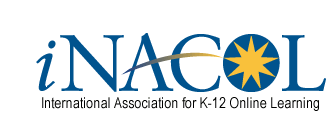There are several key components to online courses. They mirror the "questions to ask" and can help to evaluate and understand the course. Click on each for much more information or simply scroll down.
1. Curriculum
2. Instructional Design
3. Teacher Quality
4. Student Roles
5. Assessment
6. Management and Support
7. Infrastructure
Advantages and Disadvantages
1. Curriculum and instruction can be more meaningful to students if they draw upon students’ pre-existing understanding, interests, culture and real-world experiences. However, course content and assessments should also align with state academic standards
A complete syllabus should be available for review. The syllabus might contain the course description; learning objectives and outcomes; assignments with schedules and rubrics to assess quality; course-related resources and reference materials; policies for attendance, grading, participation, late assignments, tests, academic honesty, use of copyrighted material, Internet safety, and online behavior.
Expectations for participation in asynchronous online discussions will be made clear if the syllabus also contains an exemplary response to a course-related discussion question and expectations for length, frequency and due days for student input and response to others.
To deeply explore content for mastery, and to enrich the curriculum, resources might include grade-level appropriate research sites for students, student search engines, online libraries, access to museum holdings, exposure to primary documents, use of real data, communication with experts in the field, and online bookstores.
to top
2. Instructional design
Selecting a learning model appropriate for the nature of course content is a first step in instructional design. Courses can either be self-paced or designed around a set schedule and calendar. They can be synchronous or asynchronous, or a combination of the two.
The online K-12 course should appeal to various learning styles. Designers might apply Universal Design for Learning (UDL), which provides a framework for individualizing learning in a standards-based environment through use of flexible materials and methods.
to top
3. Teacher quality
Has the teacher demonstrated his/her subject-matter expertise and been trained to teach online?
Teachers need both technical competence and effective pedagogy to teach in an e-learning environment . They need to learn how to use the course delivery software and be mentored during their first experience teaching online.
Teachers also might need to help students with technical problems. They need good written-communication skills to provide timely feedback and regular progress reports to students, parents and students’ home school liaisons. They must ensure that interactions build a community of learners, effectively moderate online discussions, monitor frequency and quality of student participation in discussions, and assist students with managing time and completing assignments. Teachers also may need to adapt learning activities and assessments to accommodate students with disabilities.
to top
4. Student roles
Before enrolling, can students determine if they are good candidates for online learning?
Online learning is not for every student. Students must have regular access to computer hardware and software that is appropriate for online learning. An online questionnaire and perhaps a sample online learning experience should be available to help students determine their learning style and if online learning is right for them
Students should understand that those who tend to be successful have strong organizational skills; are highly motivated to learn; have good reading, writing and computer skills; and are not afraid to ask questions.
to top
5. Assessment
Tests and course activities should promote abstract thinking and critical reasoning . Assignments that include student reflections on course work (e.g., readings, projects, labs, online discussions and collaboration with peers), peer review and revision help students acquire those skills.
Are assessments authentic, formative, regular and summative? Do they guard against cheating? Online testing and creating valid assessments are issues affecting quality.
Assessments include such measures as contributions to online discussions, completion of online assignments, portfolio submissions, projects/presentations, creation of authentic products, tests and quizzes, and student reflections on their own learning. Students also should be involved with evaluating their own work using rubrics, which are provided.
Online teachers should regard every test as “open book” and an opportunity to view assessment to not only measure learning, but also to serve as part of the learning process.
to top
6. Management and support systems
Are secure administrative, technical and personal support systems available to instructors and students, which ensure uninterrupted, successful participation in the online environment?
Technical assistance for both students and teachers should be available, including written online directions regarding the use of media. Management should provide teachers and students with orientation sessions for using the features contained in the course instruction delivery system.
Key to instructor success, and also to minimize costs of online instruction, is the use of a course management system. Sophisticated software packages enable instructors to monitor student progress and performance, track their time on task, and intervene on an individualized basis, as needed. Course management systems can generate automatic messages such as suggesting additional activities based on homework and quiz performance, or encouraging greater participation in online discussions.
to top
7. Technological infrastructure
Technical specifications for required hardware and software should be stated, along with minimum technology skills that students should have. Students should be aware of the approximate total time per week that they should devote to online interactions, studying and assignments.
Learning outcomes, not the availability of technology, should determine the technology used to deliver course content. In addition, the National Association of State Boards of Education (2001) stated, “All Internet sites operated by public education institutions should meet Web accessibility standards as is now required for all federal agencies.”
to top
|



